A Complete Two-Day Nikko Itinerary
We visited A LOT of places during our three months in Japan, but Nikko left quite an impression on us. We decided to spend two days in Nikko and then for a few more when we had extra time in Tokyo! We loved our summer trip to Nikko so much that we decided to plan a fall trip there a few years later and enjoyed seeing this beautiful town in different seasons. Here is our comprehensive Nikko itinerary with all the best things to do in Nikko and the best places to eat in Nikko!
How to Get to Nikko & Transportation in Nikko
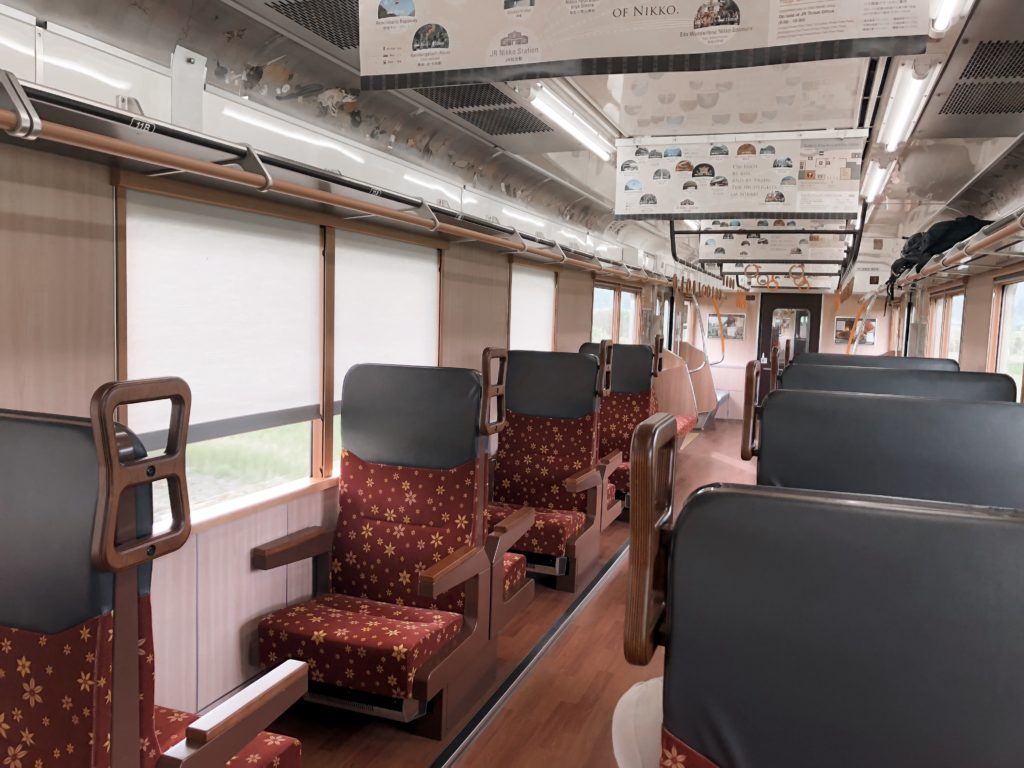
If you have an active JR Pass, the best way to get to Nikko is via the Tobu-Nikko Line from Tokyo’s Asakusa station. For those without a JR Pass, there are two other tickets to consider buying. JR Pass holders might also want to consider these too!
Nikko All Area Pass (valid for 4 days)
The Nikko All Area Pass includes one round-trip ticket from Tokyo and unlimited rides on trains and buses in Nikko and Kinugawa onsen area. If you plan to travel to different places in the Nikko area, this pass is probably your best bet.
PRICES: April 20 – November 30 – Adults: 4,780 yen, Children: 1,330 yen
December 1 – April 19 – Adults: 4,160 yen, Children: 1,080 yen
More information about the Nikko All-Area Pass
Nikko World Heritage Area Pass (valid for 2 days)
The World Heritage Area pass also includes one round-trip ticket from Tokyo but only covers unlimited rides for train and bus services for certain areas. These areas include Toshogu Shrine, Futarasan Shrine, and Rinnoji Temple.
PRICES: Adults 2,120 yen, Children 630 yen
More information about the Nikko World Heritage Area Pass
Where to Stay in Nikko
Nikko Station Hotel II
On our first trip to Nikko, we stayed at the Nikko Station Hotel II which is convenient for those traveling by public transportation since it is close to one of Nikko’s train stations, bus stops, and a grocery store. It was also pretty budget-friendly while still having a nice amount of space and a comfortable space to sleep and relax!
- Location: Japan, 〒321-1406 Tochigi, Nikko, Matsubaracho, 17−4 // MAP
The Ritz-Carlton, Nikko
On our most recent trip to Nikko, we decided to splurge and stayed at The Ritz-Carlton, Nikko which is outside of the town in Nikko National Park and is one of Nikko’s best luxury hotels. We stayed in one of the King rooms which had plenty of living space, a huge closet, and a nice outdoor patio. But my favorite feature is the partial open-air bath with a terrific view of Mount Nantai or Lake Chuzenji. In the evenings we enjoyed the hotel onsen which has water sourced from nearby Yumoto Onsen.






One thing you can’t miss is the delicious breakfast served each morning at The Japanese Restaurant or delivered to your room. You can choose between a Japanese or Western breakfast which comes with a variety of small dishes with items from the Tochigi Prefecture alongside a delicious basket of breads.



- Location: 2482 Chugushi, Nikko, Tochigi 321-1661, Japan // MAP
Other Hotels in Nikko to Consider:
- Mid-range: Asaya has extremely high ratings for comfort, relaxation, and hospitality. It is also a family-friendly hotel in Nikko too.
- Luxury: Okunoin Hotel Tokugawa – There are several luxury hotels and onsen ryokans in Nikko that are perfect for a romantic getaway like The Ritz Carlton, Nikko but this is an additional top-rated luxury hotel in Nikko.
The Best Time To Visit For Your Nikko Itinerary
While there isn’t a bad time to visit Nikko, we believe that summer and autumn are the two best times to travel to Nikko. In the summer, cooler temperatures surround Nikko making it usually more tolerable during a hot summer in Japan. Waterfalls are typically at their best during this time and the trees are full of lush green leaves. In autumn, Nikko has beautiful, mild temperatures and some of the best fall foliage to view in Japan!
Key Things to Know Before You Visit Nikko
- Much of Nikko’s history with Buddhism goes back to a Buddhist monk named Shodo Shonin who introduced Buddhism to Nikko. You’ll see his name mentioned frequently when visiting many of the World Heritage Sites in Nikko.
- Most of the sites and attractions in Nikko include a lot of walking. It’s best to wear comfortable shoes for walking during these long periods and distances.
READ MORE: A Complete 5-Day Tokyo Itinerary
What to Eat in Nikko & Places to Eat in Nikko
Yuba (Tofu Skin), Nikko’s Most Famous Food

Because Nikko is a temple town and Buddhist monks eat a vegetarian diet, there are several vegetarian and vegan dishes and restaurants in the area. The most popular traditional dish in Nikko is yuba. Yuba is made by boiling soy milk and picking up the skin that forms on the top of the water.
Around Nikko, you’ll find yuba used in various ways such as yuba ice cream, yuba on soba noodles, and even yuba sashimi. It’s an extremely versatile ingredient, another reason it is so popular.
A few of the popular restaurants that serve yuba dishes include:
- Yubakomachi: Has a versatile menu with several yuba dishes and other classic Japanese dishes.
- Location: Japan, 〒321-1406 Tochigi, Nikko, Matsubaracho, 255 ホテルヴィバ日光 1F // MAP
- Nikko Yubamaki Zen: A sushi restaurant that offers set meals with yuba. Terrific for trying yuba in a variety of ways!
- Location: 1007 Kamihatsuishimachi, Nikko, Tochigi 321-1401, Japan // MAP
Komekichi Kouzushi

While this is one of the most popular restaurants in Nikko, Komekichi Kouzushi lived up to the hype. It had some of the best sushi we’ve had in Japan, so we had to recommend it for our Nikko itinerary. We suggest fatty tuna, squid, salmon, and yuba sashimi.
Location: 9-1 Matsubaracho, Nikko, Tochigi 321-1406, Japan // MAP
Tochigi Wagyu Beef in Nikko

Tochigi beef is a local wagyu that has earned many accolades for its tenderness, flavor, and fat ratio. In Nikko, many restaurants specialize in preparing Tochigi beef in a variety of ways such as teppanyaki (cooked over a flat grill), shabu shabu (thin slices of beef flash cooked in a hot pot), and even as a tartare or sashimi.
Places to Try Maezawa & Tochigi Beef in Nikko:
- Nikko Guruman’s Wagyu: This popular steak restaurant in Nikko has both Tochigi and Maezawa beef served sizzling on a hot plate. Don’t forget to order the delicious garlic rice to enjoy on the side!
- Enya: A more budget-friendly option with a wider menu variety appeasing groups.
- The Japanese Restaurant: This restaurant is located in The Ritz Carlton, Nikko but you don’t have to be a guest to dine here! Enjoy many local favorites in one of their set menus including Tochigi wagyu beef served teppanyaki or shabu shabu style.
Nikko Pudding Tei

One of my favorite Japanese desserts is purin which is a thick, custard pudding so I had to stop by Nikko Pudding Tei on my most recent visit to Nikko. This small shop makes all of their puddings in-house using ingredients from Nikko including milk from nearby Ozasa Farm, strawberries from Tochigi Prefecture, and eggs from Nikko farms. They have many purin flavors including strawberry, coffee, and matcha. But I opted to try their “Nikko Pudding” which is a traditional purin that has an decadent caramel flavor.
Location: 410-7 Ishiyamachi, Nikko, Tochigi 321-1405, Japan // MAP
Ageyuba Manju


Ageyuba Manju is a delicious sweet and salty street snack I recommend trying while in Nikko! It is made by taking yuba (tofu skin) and wrapping it around a ball of sweet red bean paste. It is then coated in a tempura batter, deep-fried, and covered with salt. In my opinion, it is the perfect harmony of sweet and salty and great for an afternoon snack! The best place to try ageyuba manju is Sakaeya near Tobu-Nikko station. Don’t be surprised if there is a long line when you show up! But don’t worry, it moves quickly.
Location: 10-1 Matsubaracho, Nikko, Tochigi 321-1406, Japan // MAP
Kakigori (Japanese Shave Ice)

Nikko prides itself on its clean, natural water. Nikko houses 3 out of 5 ice houses that are currently in Japan. Because of the softness and purity of the water, shaved ice in Nikko is a creamy delicious treat to enjoy, especially during the summer. There are several shave ice shops in Nikko, each with special flavors.
Kakigori Shops in Nikko:
- Shogetsu Himuro: A longstanding premium kakigori shop that uses natural ice from Nikko! This was my favorite kakigori shop in Nikko. Popular flavors include satsuma mandarin, uji matcha, premium strawberry, and premium raw mango.
- Kanmi-dokoro Nikkojaya: Has delicious traditional Japanese sweets and a few different kakigori flavors to try like ume, matcha, and strawberry.
- Cafe Senryo-chaya: Stop in for a roasted sweet potato in the fall and some kakigori in the summer! They source their ice from Genmono Shogetsu, a pure water source and have delicious unique flavors such as guava, mandarin orange, and kuromitsu kinako (brown sugar syrup with roasted soybean powder).
- Nikko Coffee: A popular place to grab lunch and try Nikko’s kakigori. They serve more traditional flavors like matcha with adzuki (sweet red bean) and Tochiotome strawberry with condensed milk.
DAY 1 – NIKKO ITINERARY
- Shinkyo Bridge
- Rinnoji Temple
- Toshogu Shrine
- Futarasan Shrine
- Iemitsu Mausoleum
- Shiraito Falls
- Nikko Tamozakwa Imperial Villa
- Kanmangafuchi Abyss
Shinkyo Bridge
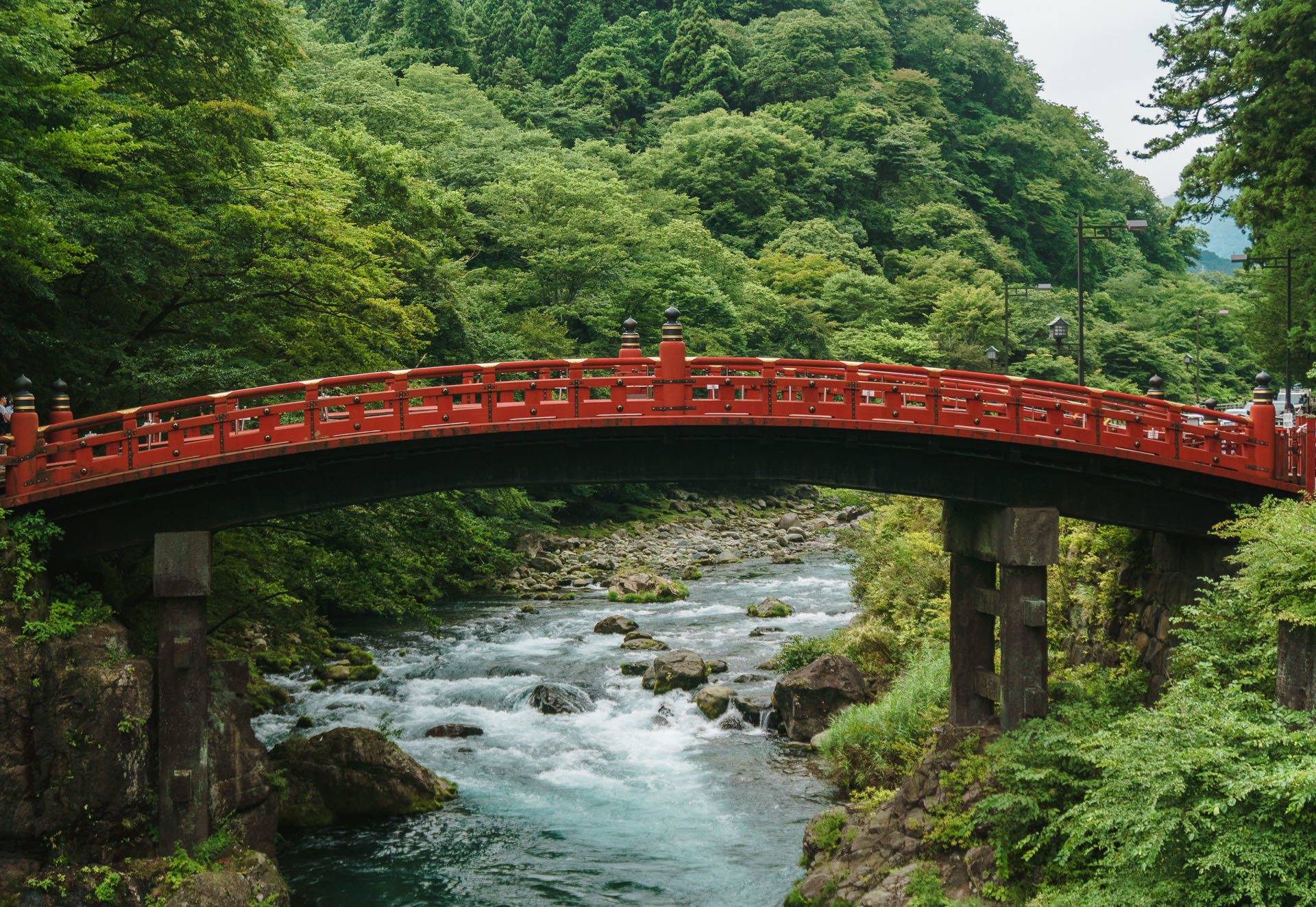

Shinkyo Bridge is a stunning, vermillion-footbridge that is set over the turquoise hue of the Daiyagawa River and at the foot of the mountains of Nikko and Nikko National Park.
Legend has it, that Shodo Shonin, a Buddhist monk, was unable to cross the river and asked for help from the deities. After pleading, two snakes appeared and created a bridge. The Shinkyo Bridge you can see in Nikko today was constructed in 1636. Though it used to be closed to foot traffic you can now cross for a small fee.
Location: Kamihatsuishimachi, Nikko, Tochigi 321-1401, Japan // MAP
Rinnoji Temple
Rinnoji Temple has a history of over 1,200 years and was founded by Shodo Shonin. The main building of Rinnoji Temple is Sanbutsudo Hall which houses several Buddhist statues including the three mountain deities, Amida, Senju-Kannon, and Bato-Kannon. Nearby Sanbutsudo Hall is the temple’s treasure house and Shoyoen garden which has a beautiful path around a small pond.
Location: 2300 Sannai, Nikko, Tochigi 321-1494, Japan // MAP
Toshogu Shrine
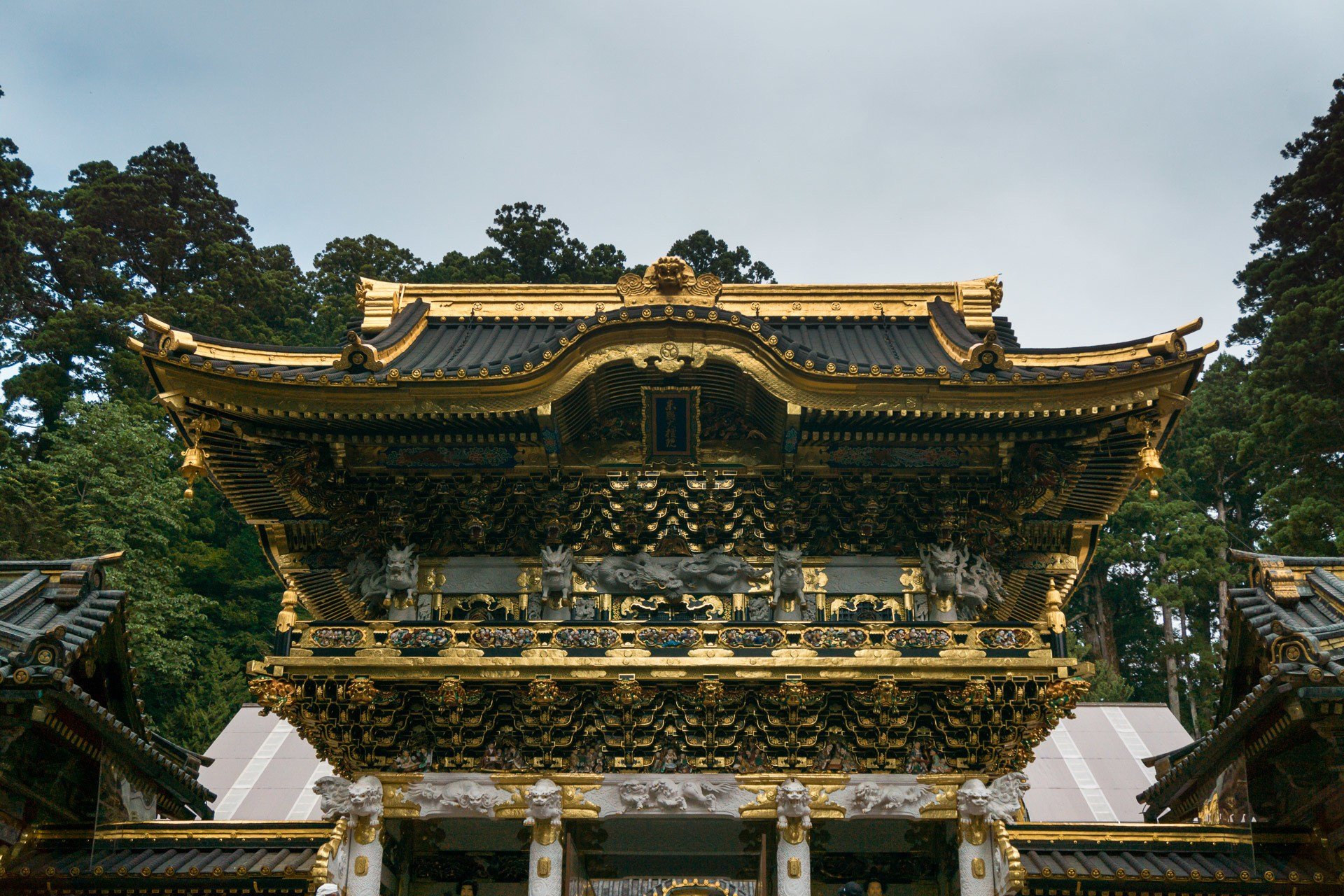
The most popular shrine in Nikko is Toshogu Shrine. Inside the shrine is the final resting place of Tokugawa Ieyasu, the founder of the Tokugawa Shogunate which ruled for over 250 years in Japan.



Ieyasu’s grandson, Iemitsu respected his grandfather greatly and wanted to create a beautiful place to honor the late Shogunate. At Toshogu Shrine, there are 12 or so buildings encased with intricate carvings and gold leaf making it the most lavishly decorated shrine in Japan. It is also one of the most famous Japanese World Heritage Sites.
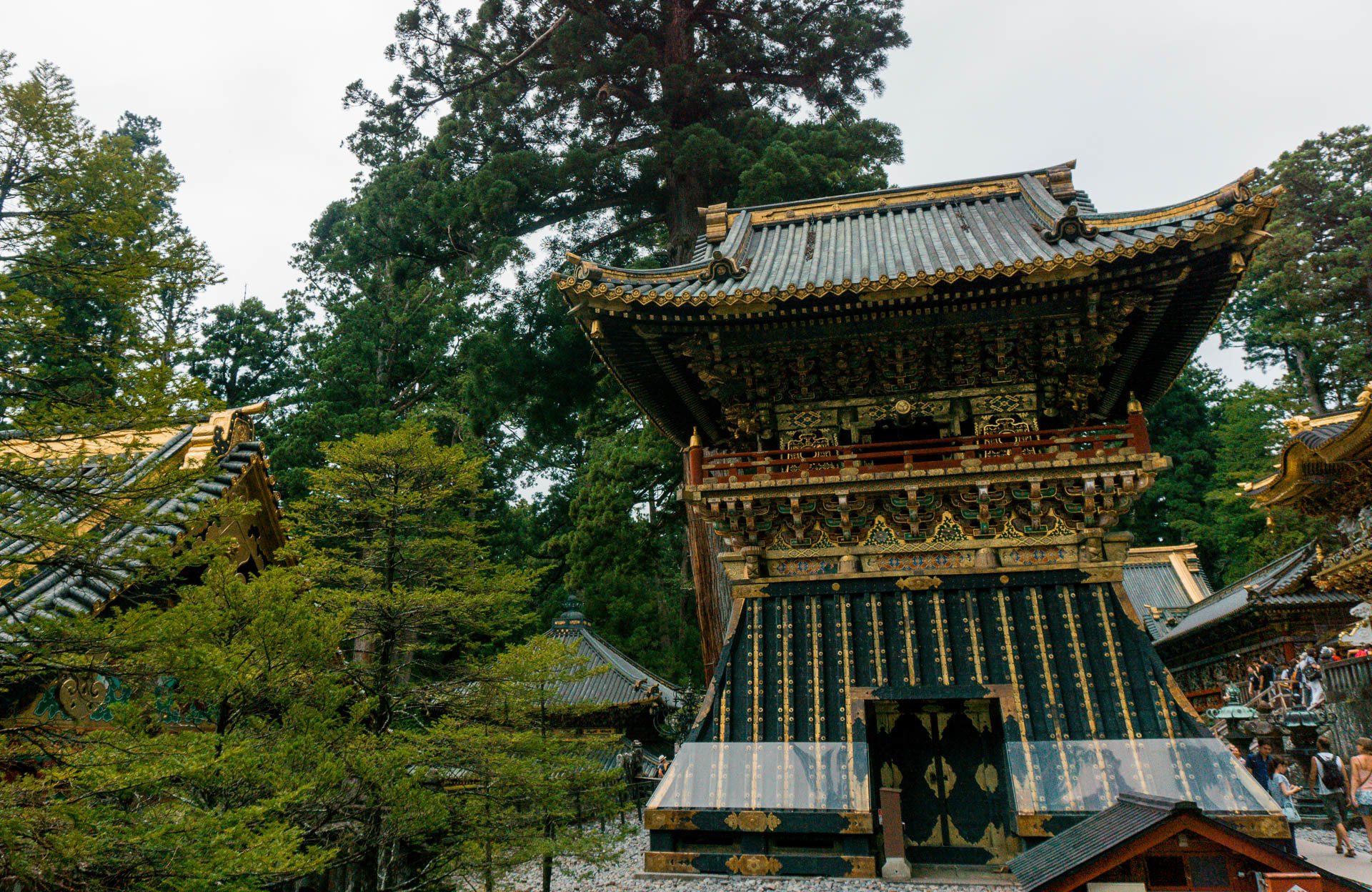
Because Toshogu Shrine has many different buildings and fine details, be sure to look for the following while you’re visiting.
- Five-Story Pagoda: At the entrance of the shrine there are times when visitors can enter the pagoda for an additional fee.
- The “hear no evil, see no evil, speak no evil” monkey carving on one of the storehouses by the main entrance.
- Yomeimon Gate: One of the grandest, decorated spots on the grounds.
- The main shrine building is where visitors can enter and wonder at the marvelous details inside (keep in mind, no photos are allowed).
- After, look up at the Sakashitamon Gate, where the carving of Nemurineko, a sleeping cat lies.
- The mausoleum for Tokugawa Ieyasu is through the Sakashitamon Gate and is about a five-minute walk uphill.
Location: 2301 Sannai, Nikko, Tochigi 321-1431, Japan // MAP
Futarasan Shrine


Close to Toshogu Shrine is Futarasan Shrine, which is the oldest shrine in Nikko going back to 782 when founded by Shodo Shonin. Although it isn’t as sumptuously decorated as the other nearby shrines, the nature that surrounds Futarasan Shrine is very peaceful. You’ll be surprised at how much less the traffic is here even though it is only a short distance away from Toshogu Shrine.
Futarasan Shrine is dedicated to the deities of Nikko’s most sacred mountains, Mount Nyoho, Mount Taro, and Mount Nantai. It is also a place where people come to pray for good luck, healthy pregnancies, and marriages.
Location: 2307 Sannai, Nikko, Tochigi 321-1431, Japan // MAP
Iemitsu Mausoleum (Taiyuinbyo)
While Toshogu Shrine is the final resting place for Ieyasu, the founding Tokugawa Shogunate, Taiyuinbyo is the mausoleum where the remains of Iemitsu, the grandson of Ieyasu and 3rd Tokugawa Shogun are kept. When visiting, we noticed many similarities to Toshogu Shrine, although slightly less luxurious in appearance out of Iemitsu’s respect for his grandfather.
At Iemitsu Mausoleum there are two halls. The first one we came across was Haiden, the praying hall. At Haiden there is a sculpture of a white dragon at the entrance. It’s a relatively small space, but visitors are allowed to enter the haiden where there is more beautiful decor and carvings to behold. The other hall at Iemitsu Mausoleum is Honden, the main hall. This hall cannot be entered but can be viewed from the outside.
Of course, after visiting the two halls, we then went to view Tokugawa Iemitsu’s mausoleum which is noted by many intricate details and a white gate over the doors.
Location: 2300 Sannai, Nikko, Tochigi 321-1431, Japan // MAP
Nikko Shiraito Falls


Hidden behind Toshogu Shrine, Shiraito Falls can be easily missed. Though it isn’t as boastful as Kegon Falls, which we’ll cover later in this Nikko itinerary, it is set back far enough that it’s the perfect place to escape some of the crowds and view two smaller shrines as well.
Location: Sannai, Nikko, Tochigi 321-1431, Japan // MAP
Nikko Tamozawa Imperial Villa
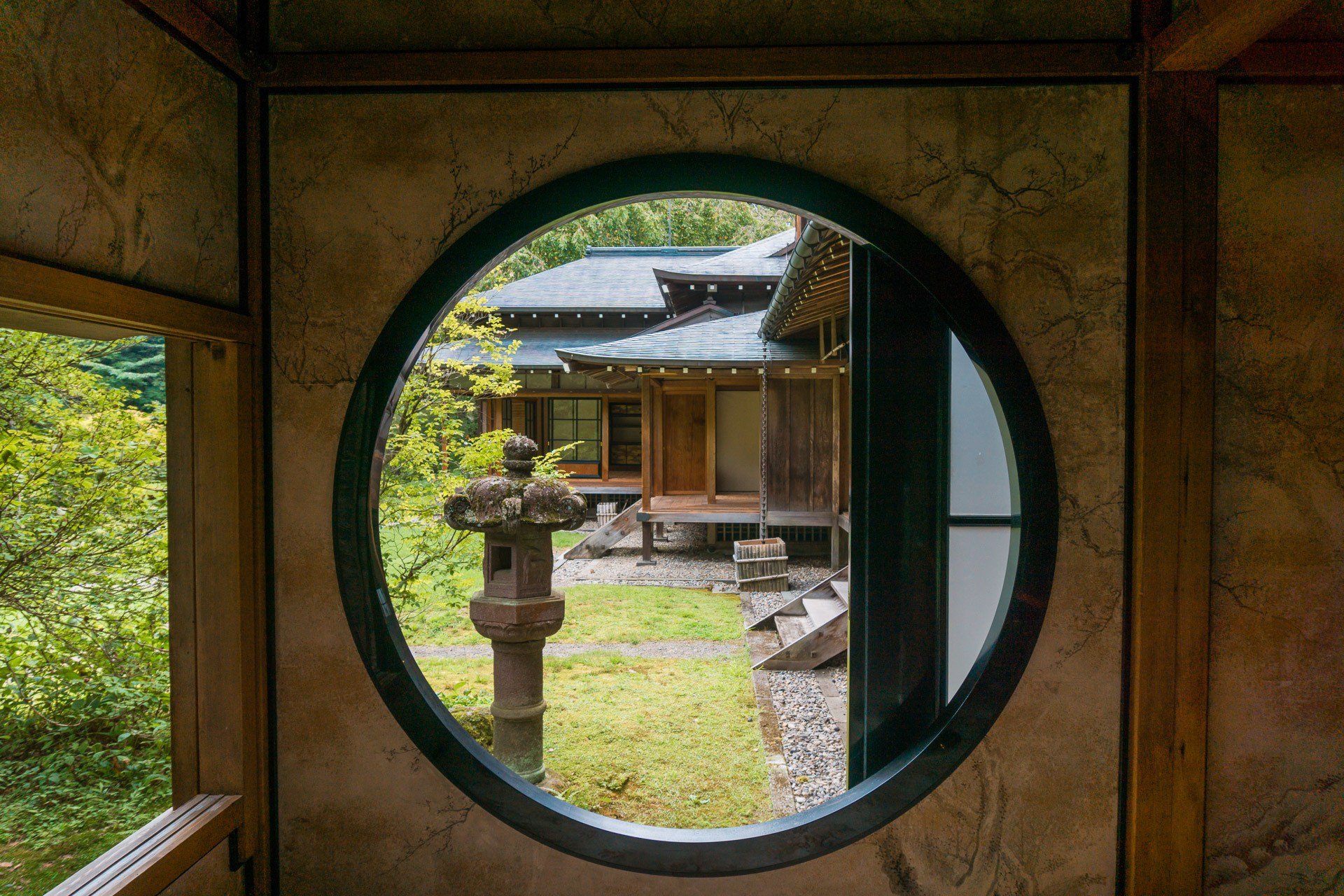
After making our way back down to the entrance of Nikko National Park by Shinkyo Bridge we walked to Nikko Tamozawa Imperial Villa (there is also a bus that can take you to the entrance as well). We aren’t sure if this Nikko attraction is normally busy, but we happened to visit while no other guests were there!
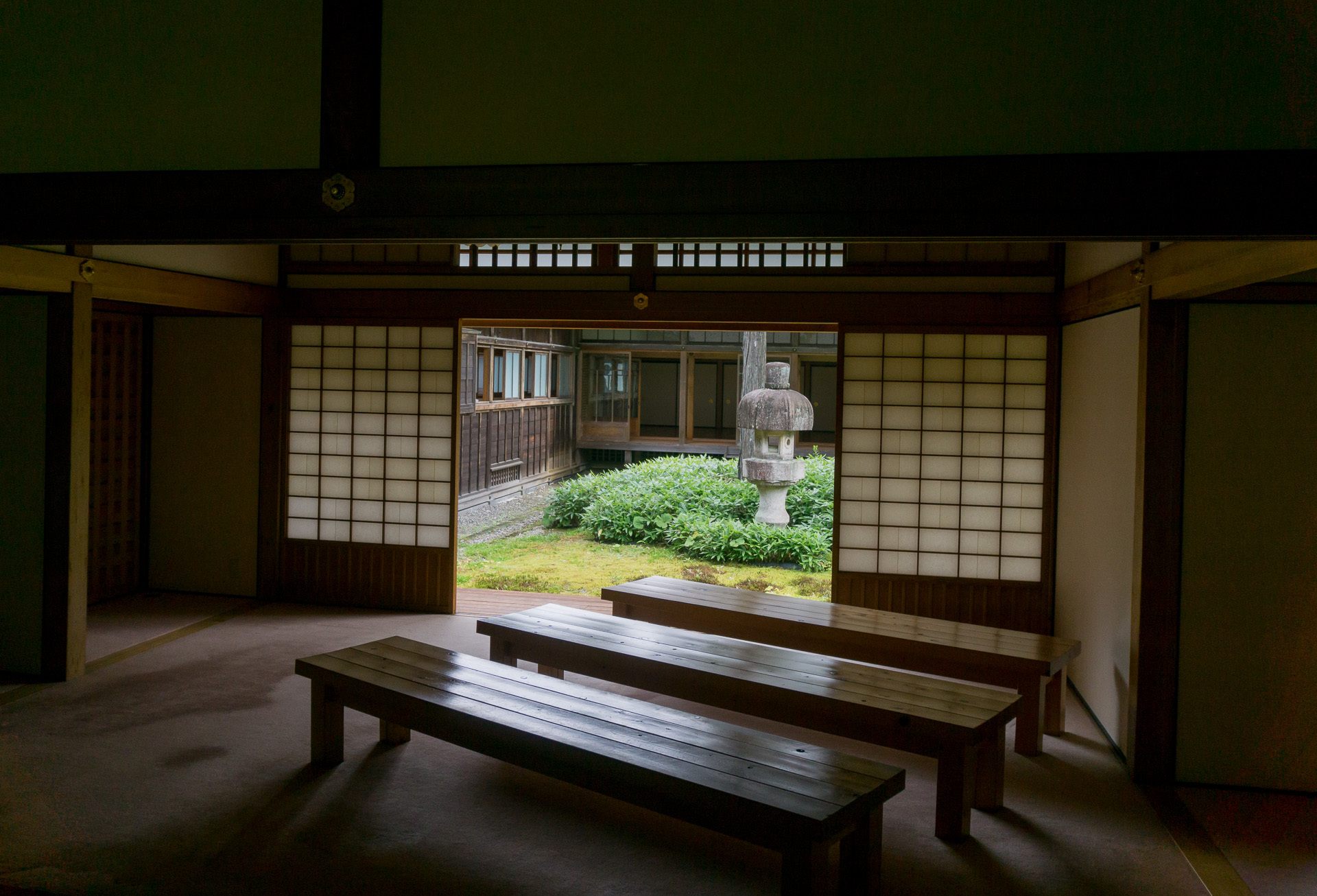
Tamozawa Imperial Villa was originally brought to Nikko from Tokyo in 1899 and combines traditional Edo and Meiji architecture. But before being moved to Nikko, it served as the Tokyo residence of the Tokugawa family and later, the Imperial Palace. Once in Nikko, it became the summer residence of the Imperial Family but suffered extreme neglect after World War II. It was later opened to the public in 2000 after extensive repairs.
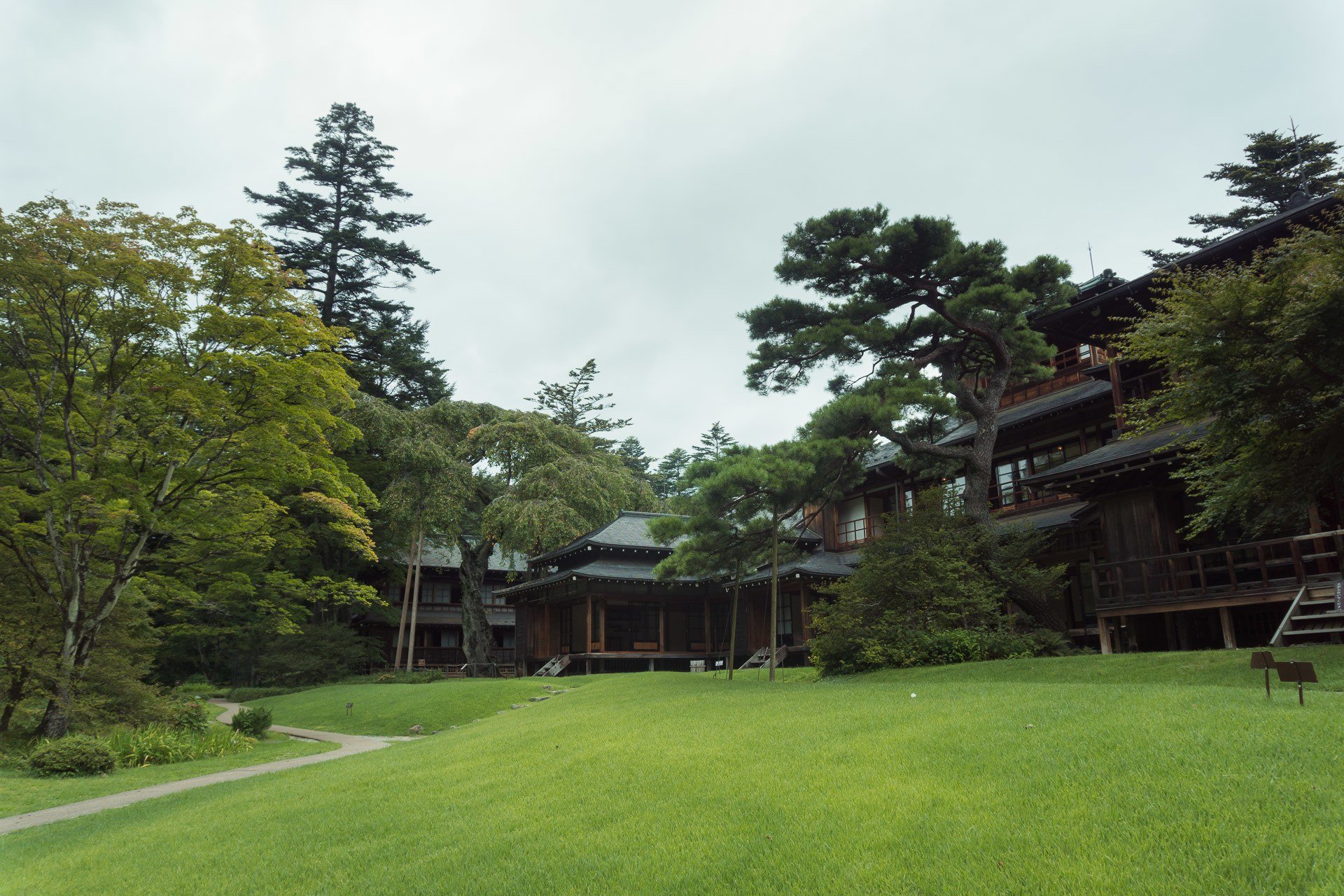
Tamozawa Imperial Villa remains one of the largest wooden buildings in Japan and serves as a museum with multilingual displays for guests. While we were visiting, we couldn’t help but take note of the attractive gardens outside the residence and the elegantly decorated interior.
Location: 8-27 Honcho, Nikko, Tochigi 321-1434, Japan // MAP
Kanmangafuchi Abyss


After visiting the Imperial Villa head to to Kanmangafuchi Abyss. Once a more hidden spot in Nikko, Kanmangafuchi Abyss is becoming more popular. Although, like Tamozawa Imperial Villa, we were also completely alone during our time here both during our summer and autumn visits!
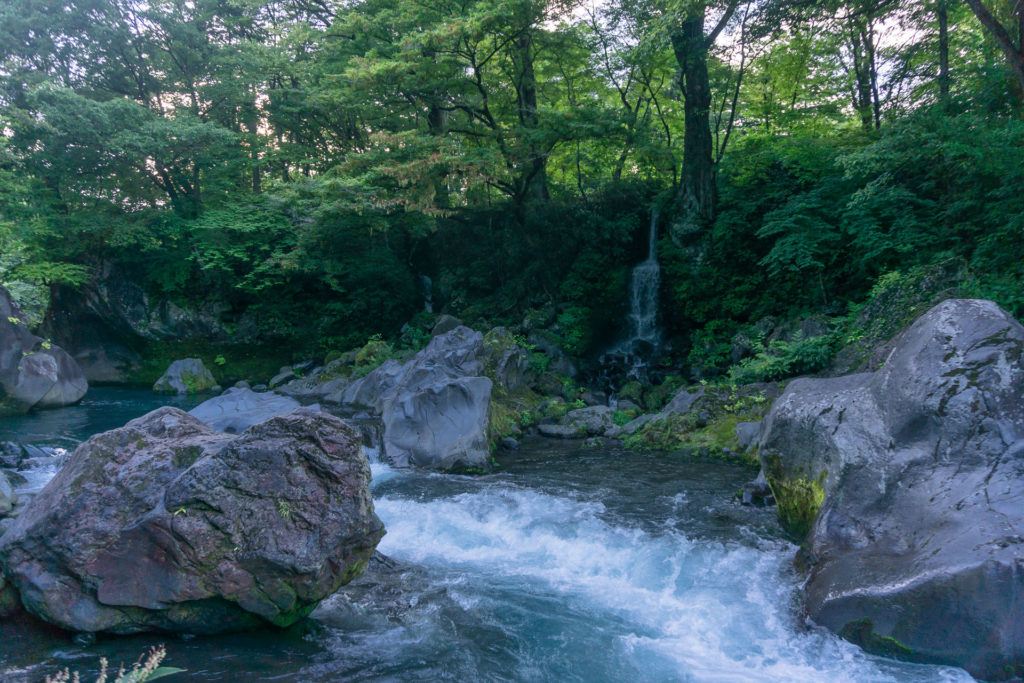
Kanmangafuchi Abyss was formed by an eruption of Mount Nantai, Nikko’s most prominent mountain, and is set along a casual walking trail with scenic waterways and rocks.


Kanmangafuchi Abyss is also known for a row of stone statues with red, head coverings, and bibs that sit in a row on the side of the river. These stone statues are known as Jizo, a Bodhisattva who cares for those who have passed away and protection for travelers, women, and children.
These Jizo statues are specifically Bakejizo or “Ghost Jizo” because when walking in and out of the abyss you cannot count the same number of statues though many people claim there are around 70. Jizo spirits are beloved in Japan because of their kindness and gentle, calming presence.
Location: Takumicho, Nikko, Tochigi 321-1415, Japan // MAP
READ MORE: The Best Day Trips From Tokyo
DAY 2 – NIKKO ITINERARY
- Irohazaka Winding Roads
- Akechidaira Plateau & Observatory
- Kegon Falls
- Chugushi Shrine
- Lake Chuzenji Boat Cruise
- Ryuzu Falls
- Senjogahara Marshland
- Yudaki Falls
Irohazaka Winding Road
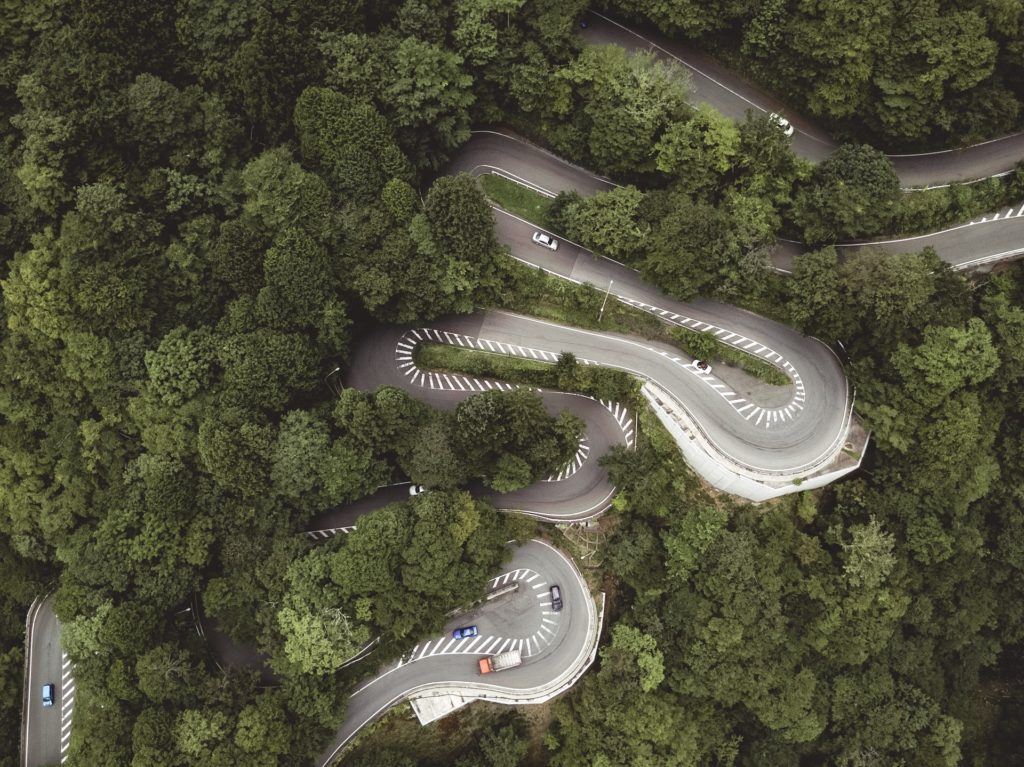
After spending a day in central Nikko we decided to head into western Nikko. We rented a car to drive up Irohazaka, a windy driving road. But the bus drives up this road as well. You might want to take some motion sickness medication but be sure to look out the window at this crazy winding road!
Location: MAP
Akechidaira Plateau & Observatory
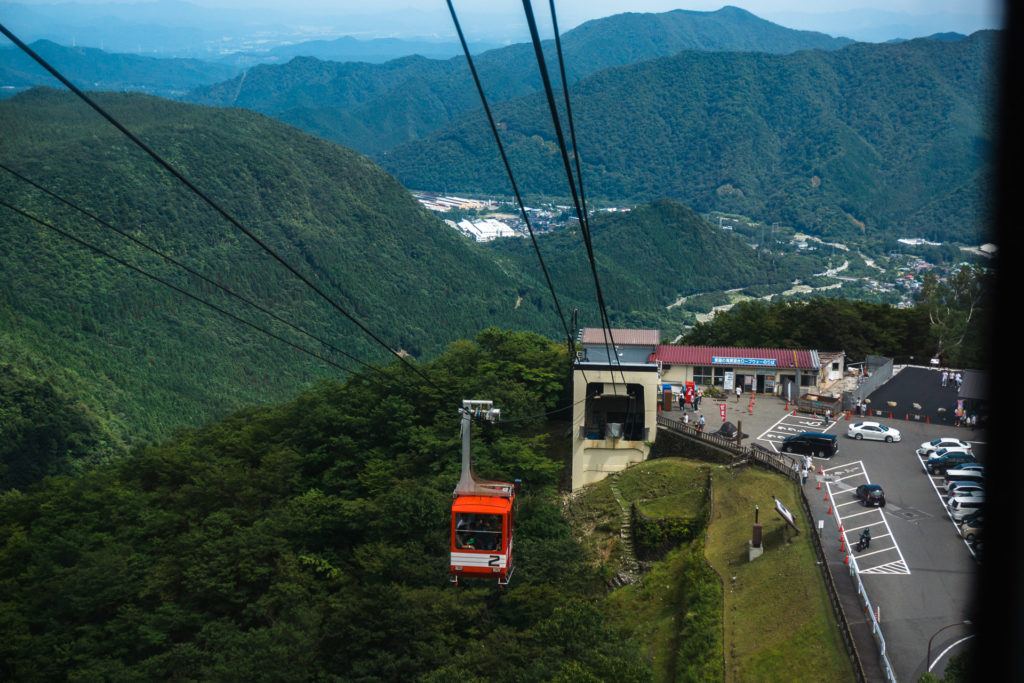
At the top of the Irohazaka winding road, there is a parking lot and a rest house that sells tickets for the Akechidaira Ropeway. The ropeway carried us to a viewing platform that has views of both Kegon Waterfall and Lake Chuzenjiko.

It’s also a very popular spot to view the autumn foliage. If you’re interested in hiking, you can also follow the two-hour hiking trail (one-way) from Lake Chuzenjiko.
Location: Japan, 〒321-1445 Tochigi, Nikko, Hosoomachi, 深沢 // MAP
Kegon Falls

Kegon Falls is one of Japan’s top three waterfalls and the most popular to visit in Nikko. Standing at nearly 100 meters tall, it is the only exit for the waters of Lake Chuzenji, which is viewable from the Akechidaira Observatory. We first visited in the summer when it was prime time to see the waterfall in full force but have also visited in late fall and the waters were still exceptionally strong!
Upon arriving, you’ll notice that there are two observation areas. First is the top lookout which is free to visit. The second is an elevator which costs 570 yen per person and takes you 100 meters below ground to a multi-level viewing deck!
Location: 2479-2 Chugushi, Nikko, Tochigi 321-1661, Japan // MAP
Chugushi Shrine


Chugushi Shrine is a small branch of Futarasan Shrine but the reason I think it’s worth adding to your Nikko itinerary is because of the beautiful views it offers of Lake Chuzenji! As a bonus, Chugushi Shrine doesn’t have as many visitors as other Nikko shines so you can enjoy the tranquil environment without as many tourists around. If you plan to do any hiking around Lake Chuzenji, Chugushi Shrine is also one of the starting points for many nearby trails.
Location: 2484 Chugushi, Nikko, Tochigi 321-1661, Japan // MAP
Lake Chuzenji Boat Cruise
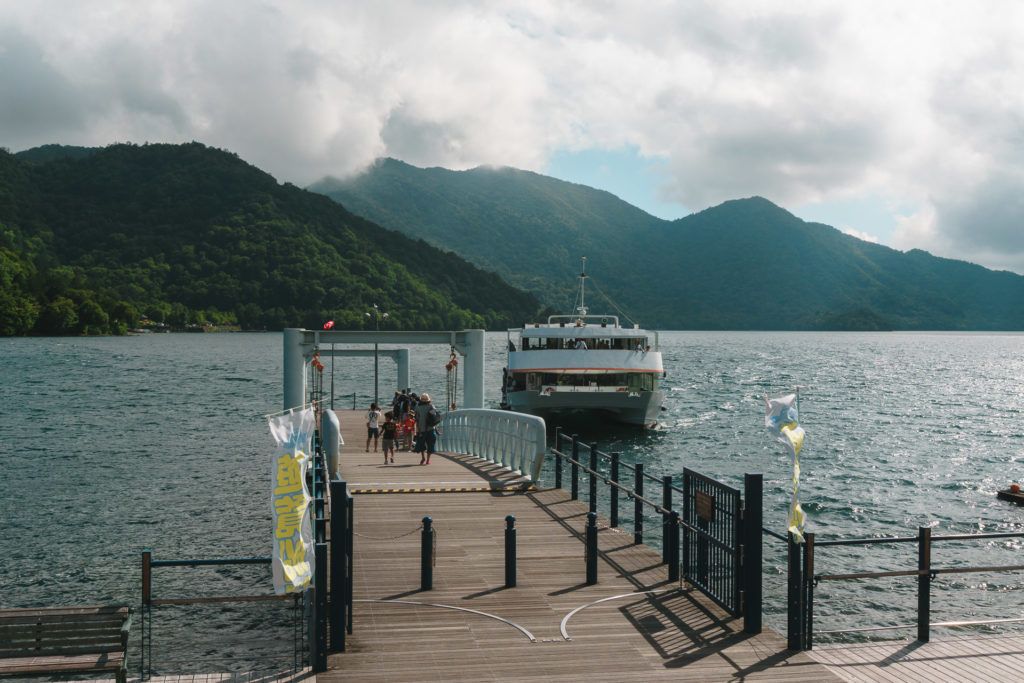
Lake Chuzenji was formed over 20,000 years ago by a volcanic eruption of Mount Nantai. Most of the shores of Lake Chuzenji are untouched by nature except Chuzenji Onsen, a small hot spring town. When visiting Lake Chuzenji we recommend taking a boat ride around the lake from the Chuzenji Onsen cruise terminal to make your way to the next destinations in this Nikko itinerary.
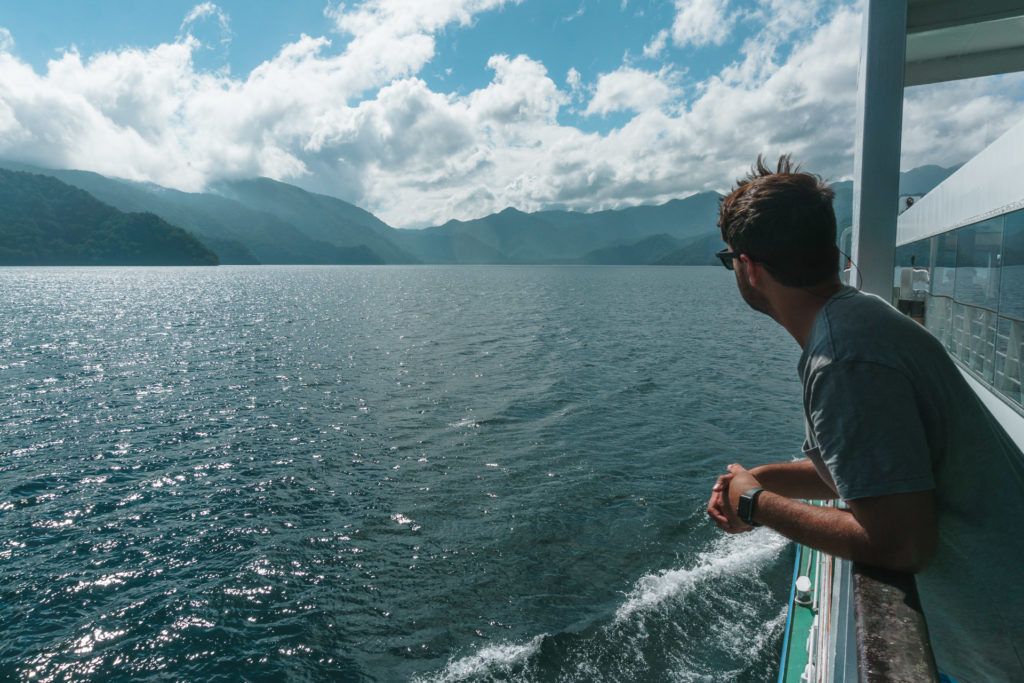
The boats make hourly departures and loop around the lake stopping at Shobugahama (20 minutes) and Chuzenji Temple (50 minutes). There are also occasional stops between Chuzenjiko Onsen and Senjugahama from June to September.
Location: 2478-21 Chugushi, Nikko, Tochigi 321-1661, Japan // MAP
Ryuzu Falls


Ryuzu Falls is also known as “dragon head waterfall” due to the shape of the falls resembling a dragon’s head. Though not as impressive as Kegon Falls, there is a small observation platform that allows visitors to look over the waterfall. If visiting during the fall, Ryuzu Falls is another terrific spot to view the autumn leaves since it’s surrounded by so many trees.
Location: // MAP
Senjogahara Marshland

The Senjogahara Plateau Nature Trail in the Senjogahara Marshland has some of the best hiking in Nikko. Like many other Nikko attractions, it is most stunning in the fall when the grass turns a reddish-gold color while the leaves on the trees surrounding turn bright yellow. If following the Senjogahara Plateau Nature Trail is the Yukawa River and takes roughly 2.5-3 hours to complete.
Senjogahara means “battlefield” and was named after the battle over Lake Chuzenji. The story is that the gods of Mt. Nantai and Mt. Akagi appeared as snakes and centipedes to fight over ownership of Lake Chuzenji. After a long battle, the gods of Nantai prevailed.
Location: Chugushi, Nikko, Tochigi 321-1661, Japan // MAP
Yudaki Falls

Although Kegon Falls is the largest waterfall in Nikko, Yudaki Falls follows close behind at 70 meters high. Though you can’t go directly by the waterfall, there is an excellent viewing platform from the side of the waterfall. While visiting be sure to grab some grilled mochi and salted grilled fish.
After visiting all of the places on day two of your Nikko itinerary you’ll make your way down Irohazaka on the opposite side.
Location: Yumoto, Nikko, Tochigi 321-1662, Japan // MAP
READ MORE: Important Things to Know Before Traveling to Japan
Other Things to Add to Your Nikko Itinerary
Edo Wonderland
Edo Wonderland is a Japanese cultural theme park near Nikko that showcases life during the Edo period (17th century) of Japan. At Edo Wonderland you can dress up in traditional clothing while being entertained by theater performances, and enjoy several Edo period experiences such as wooden boat cruises, ninja training, and a samurai swordsman experience. There are also many Edo-period delicacies to enjoy at one of the three restaurants in the park.
Hours: 9am-5pm (March 20 – November 30), 9am-4pm (December 1 – March 19), Closed Wednesdays
Cost: 4,700 yen (One-Day Pass), 4,100 (Afternoon Pass)
Nikko Water Activities
From mid-April to mid-November you can enjoy several different water activities in Nikko such as:
- Canyoning: If you’re looking for a thrilling adventure consider canyoning at the Kinugawa River. You can slide down natural chutes and ride over small waterfalls with a trained guide!
- Kinugawa River Boat Tour: During this 40-minute boat tour, a guide will take you to scenic spots on the Kinugawa River.
- Rafting: A more adventurous boat tour in Nikko is rafting. These rubber boats fit for 7-8 people following the waves and bumps of the river.
It’s safe to say that Nikko is a beautiful place to visit outside of Tokyo. We look forward to visiting again in the fall!
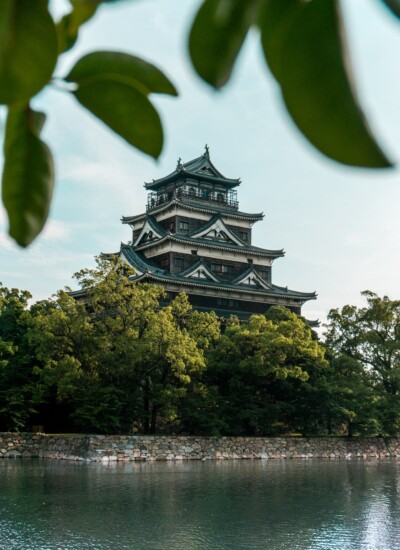


Leave A Reply!